
- Research project
- – Western Pacific
In early-September, the IWC had the opportunity to take water professionals from five countries in the Hindu-Kush-Himalaya region around a tour of the Murray-Darling Basin. This study tour was part of an ongoing training program – Multi-scale Integrated River Basin Management in the Hindu Kush Himalaya – funded by the Australian Water Partnership and co-delivered by the International Centre for Integrated Mountain Development (ICIMOD) and a consortium of Australian Partners including Alluvium, Griffith University’s International WaterCentre, and independent consultants (Helen Johnson, Ganesh Pangare, Andrew Johnson, Karlene Maywald, and Adrian Volders). This study tour capped off the 2022 round of the IRBM training program which started with the group coming together in Kathmandu to complete group work, presentations, interactive sessions and an intensive field visit of the Koshi basin.
Participants of the program came from Nepal, Bhutan, Bangladesh, India and Pakistan, and wanted to learn more about how Australia manages its scarce water resources for better environmental outcomes and water security in a balanced way. River basin management is always context specific, and the issues faced in the Hindu-Kush-Himalaya region are very different from those in Australia. Nevertheless, much of the professional expertise is transferable or will lead to better governance and management from reflecting on similarities and differences in existing and emerging challenges.
For some of the delegates it was their first time to Australia, and starting off in Sydney gave them an east coast perspective to contrast with the much drier inland areas of the Murray-Darling Basin. The bus trip to Canberra introduced the group to the Australian landscape, and took the group across the Dividing Range and past Lake George, a very old endorheic lake, with one of the highest water levels in the last three decades.
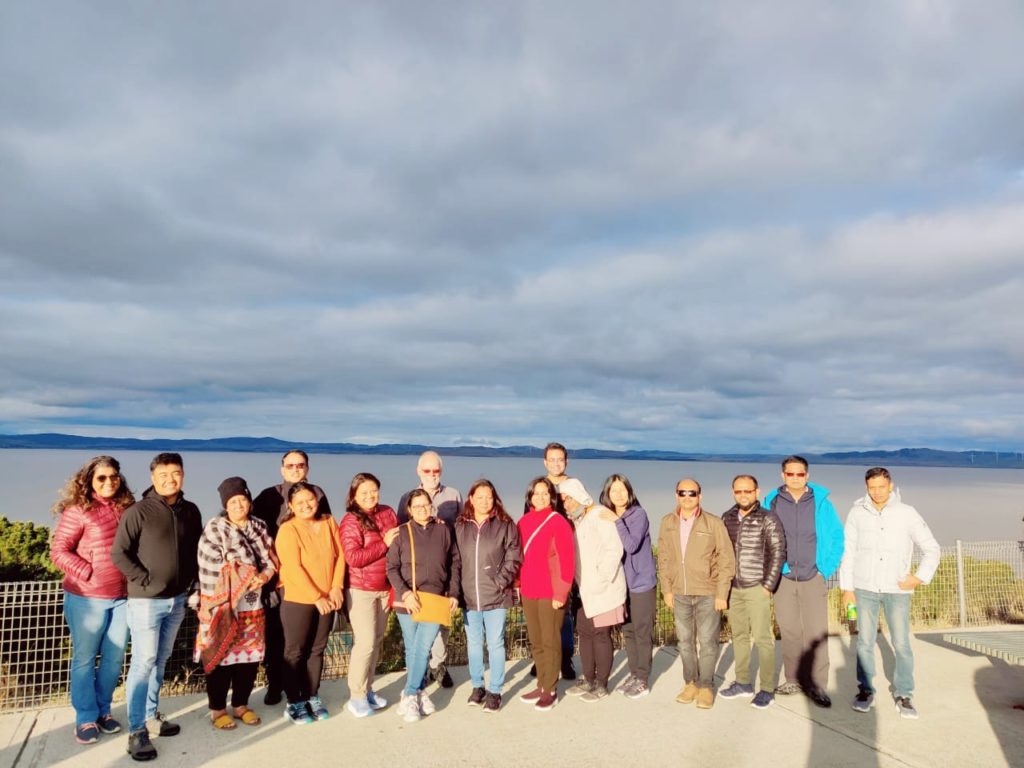
Canberra provided the real starting point of the tour, where introductions to the Murray-Darling basin were complemented by a site visit at Cotter Dam, one of the main water supply reservoirs for the city of Canberra. Dam levels at Corin, Bendora and Cotter reservoirs (all linked) are full at the moment, and water is spilling across the dam into the Cotter and Murrumbidgee confluence below. The group learned about how the physical dam barrier protects endemic species upstream from the EHN virus, present in the Murrumbidgee downstream, illustrating that dam impacts on ecological values can sometimes also have a protective effect.
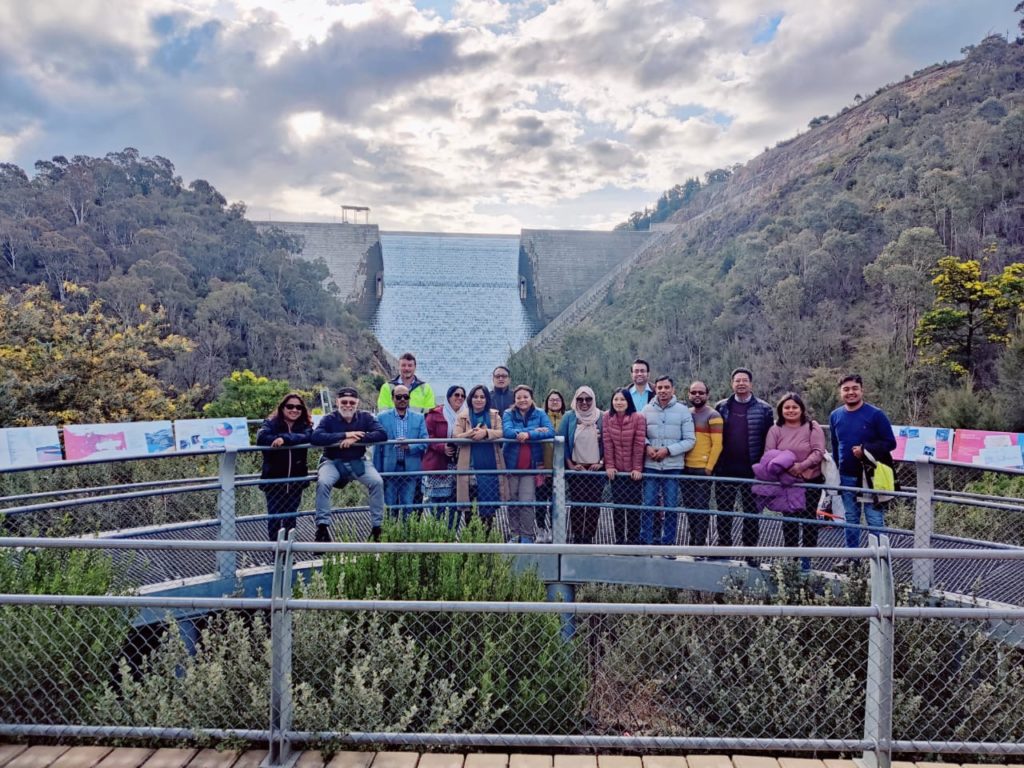
The next day was a visit dedicated to the Snowy Hydro scheme, important to many coming from a region where hydropower development is significant for electricity and irrigation. While in the Koshi River Basin in Nepal, the group visited many run-of-river hydropower plants, which have fewer ecological impacts than dam power plants like the Snowy Hydro. The impacts of the Snowy Hydro scheme on the Snowy River were discussed, as well as the economic significance of electricity supply for Sydney, Canberra and Melbourne and irrigation storage for the Murrumbidgee and the Murray.
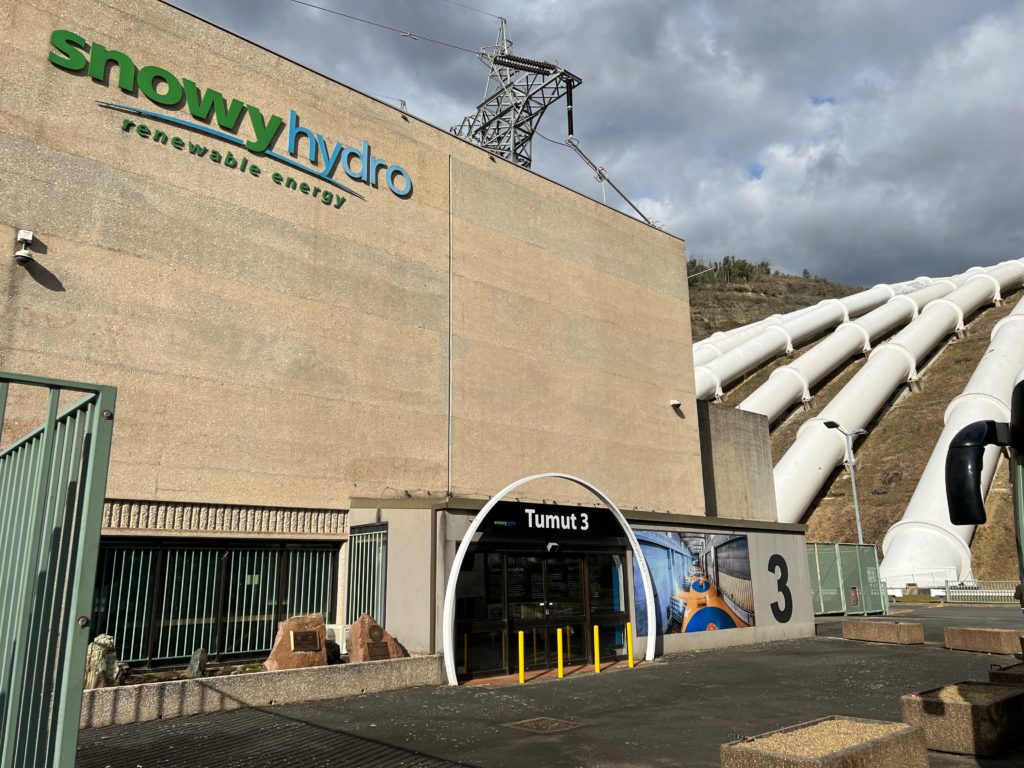
In Albury participants visited Hume Dam, one of the key reservoirs for water allocation along the Murray River further downstream, after hearing about water allocations, community engagement and constraints management. In the afternoon, a visit to Barmah Forest saw very wet conditions showed the Ramsar listed asset in all its glory. There the group learned about the ecological significance of this special area for fish, turtles, water birds and riparian vegetation. The river channel narrows in this reach, creating a natural spill of water into Moira and Barmah Lakes.
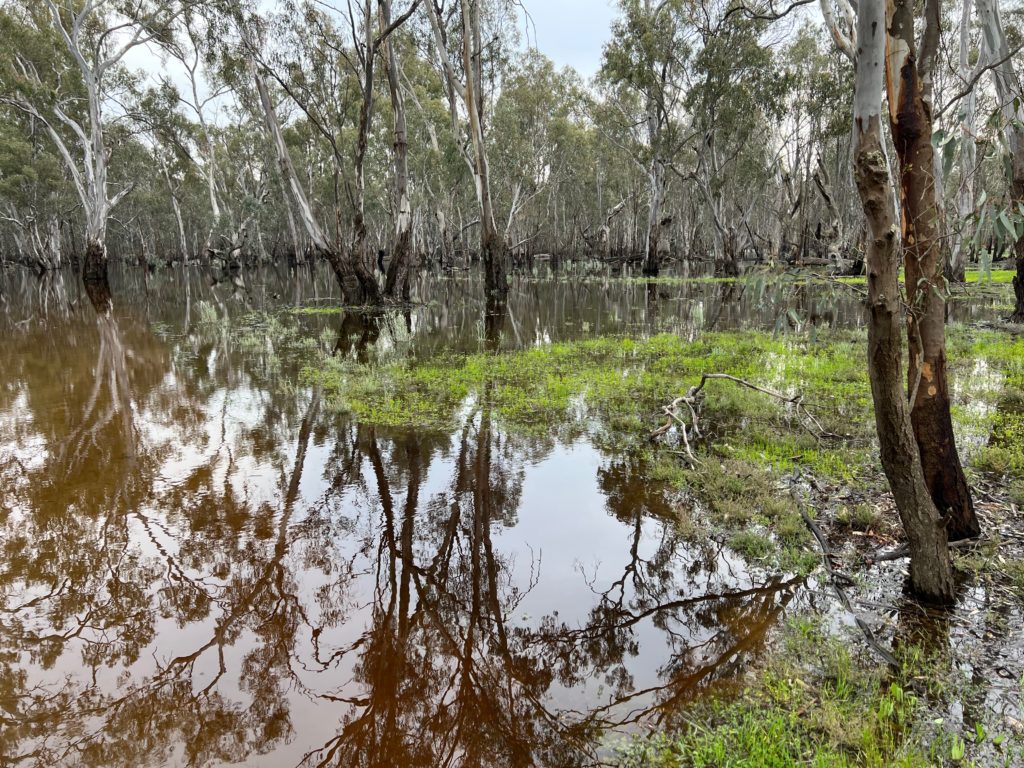
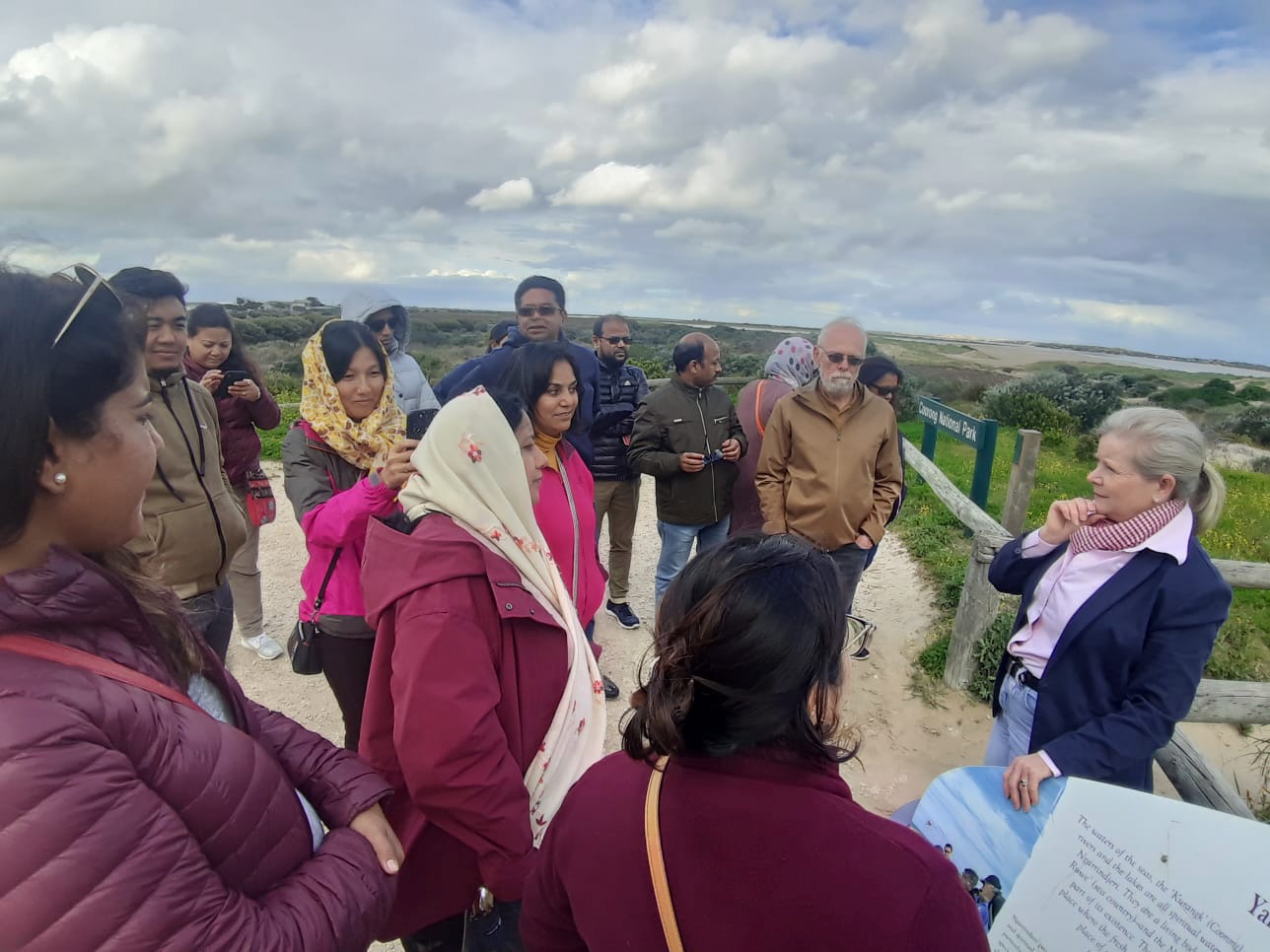
On the final day, participants learned about the complexity of fish ecology of the Lower Lakes and Coorong system, and the marine, estuarine and freshwater conditions needed to complete diadromous fish life cycles. We then went to visit the Murray mouth, where the Hon. Karlene Maywald explained South Australian water diplomacy, politics and community engagement to ensure these precious ecosystems could be maintained and sufficient environmental flows were being secured from further upstream.
The group was impressed by the way water accounting and markets in Australia provided for its most efficient use, but was surprised by the top-down approach making it difficult for Indigenous people and other community members to engage. A lot more work remains to be done in this area, as well as adapting to climate change. Challenges in the Hindu-Kush Himalaya region focus more on surface and groundwater interaction, water quality issues and early warning systems for flash flooding. Water allocation and early warning become challenging when considering transboundary issues, something which is very common in a region where most large rivers originate in the Himalayas and flow towards the Indian and Pakistani plateau. Together with their integrated river basin management training and field visit to the Koshi River in Nepal, participants experienced a rewarding program that will assist greatly in their professional water development.
As one of the participants commented:
In de Hindu-Kush-Himalaya region, we need to undertake more large scale river basin planning and learn from the Murray-Darling Basin how this can be done.
This project was funded by the Australian Water Partnership
